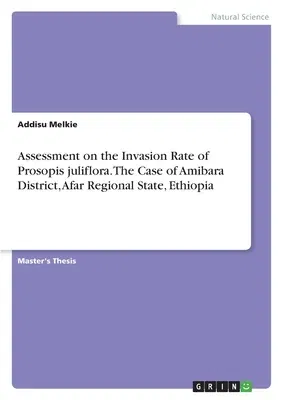Master's Thesis from the year 2009 in the subject Biology - Ecology,
Mekelle University, language: English, abstract: P. juliflora is a
powerful invader equipped with a number of special features that promote
its rapid invasion of new areas. This invasive species is currently
becoming a problematic weed in Ethiopia, especially in Afar Regional
State. The objective of the study was to analyse the invasion rate of P.
juliflora through detection LULUC using multi-temporal Landsat imagery
data obtained in 1973, 1987, 1999 and 2004. A field survey was conducted
to analyse impacts of invasion, to identify management techniques which
reduce the invasion and re-invasion of P. juliflora and to fill the
information gap that arise from the imagery analysis. This study then
reveals, over the period of 31 years, LULCC in relation to P. juliflora
invasion was changed significantly. The annual invasion rate of P.
juliflora during 1973-1987,1987-1999 and 1999-2004 was 5.61 km2/annum,
0.80 km2/annum and 3.95 km2/annum respectively. The average annual
invasion rate was 3.45km2/annum. This study also indicated that, 121.66
km2 (23.04%), 128.56 square kilometres (24.35%),145.81 square kilometres
(27.62%) and 163.064 square kilometres (30.89%) of the study area would
be under P. juliflora by the year 2008, 2010, 2015 and 2020
respectively, if proper controlling measures are not taken without
delay. Invasion of P. juliflora causes loss of biodiversity and
ecological service, affect livelihood of the pastoralist and
agro-pastoralist, crop production and human health. If properly managed
it shows positive implication on the soil amelioration, micro-climate
and income generation for charcoal makers. But the pastoralist and
agro-pastoralist call for its eradication because under the current
management system the disadvantages outweigh the advantages. Management
techniques explored was clearing and digging out of the root system
below 10-30 cm from the ground, seedling uprooting with


